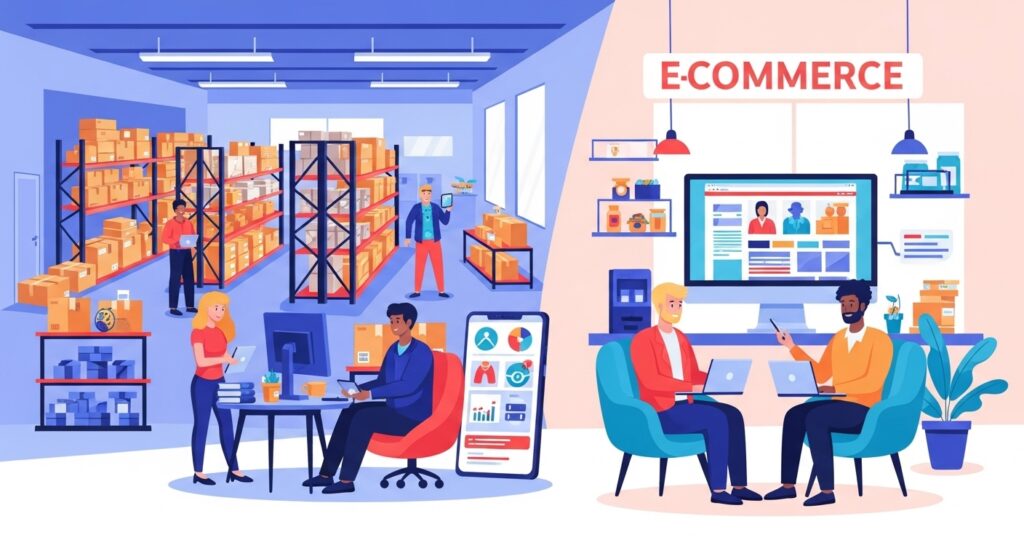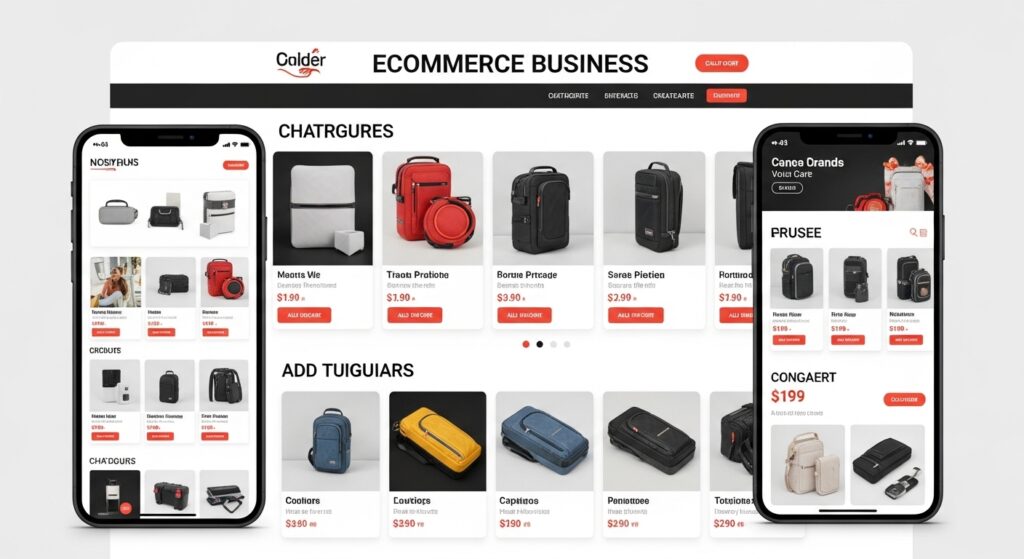
Starting an ecommerce business can be an exciting and profitable venture, especially in today’s digital age, where online shopping continues to grow rapidly. Whether you’re a first-time entrepreneur or looking to expand your existing business online, this guide will walk you through everything you need to know to launch your ecommerce business successfully.
What is an Ecommerce Business?
An ecommerce business is a company that sells products or services online through a website or marketplace. Instead of a physical store, customers browse, order, and pay for goods on the internet, which are then delivered to their doorstep.

Why Start an Ecommerce Business?
- Low Startup Costs: You don’t need a physical store, which significantly reduces expenses.
- Global Reach: Sell your products to customers anywhere in the world.
- Open 24/7: Your online store operates around the clock, allowing sales at any time.
- Scalability: Easily grow your business with minimal overhead.
- Flexibility: Work from anywhere and manage your business digitally.
Step-by-Step Guide to Start Your Ecommerce Business
1. Choose Your Niche and Products
Find a market segment you’re passionate about and that has proven demand. Research trending products, competitor offerings, and customer needs.
Tips:
- Look for products with good profit margins.
- Consider items you understand well or use yourself.
- Avoid overly saturated markets unless you offer a unique value.
2. Conduct Market Research
Understand your target audience, their buying habits, preferences, and pain points. Analyze competitors to learn their strengths, weaknesses, and positioning strategies.
3. Register Your Business
Choose a business name and register it with the appropriate legal authorities in your country. For example, in Pakistan, register with the SECP (Securities and Exchange Commission of Pakistan) or your local business authority.
4. Build Your Ecommerce Website
Your website is your digital storefront. Choose a platform that suits your needs and technical skills:
- Shopify: All-in-one, user-friendly platform.
- WooCommerce: A WordPress plugin offering high customization.
- BigCommerce: Ideal for scaling businesses.
Ensure your website is mobile-friendly, loads quickly, and has secure checkout functionality.
5. Set Up Payment Gateway
Provide secure and convenient payment options such as credit/debit cards, mobile wallets, and cash on delivery.
Popular payment gateways in Pakistan include:
- JazzCash
- Easypaisa
- PayFast
6. Source Your Products
Decide how you will acquire the products you sell:
- Manufacture your own products
- Purchase in bulk from wholesalers
- Use dropshipping services
Choose reliable suppliers to maintain product quality and ensure on-time delivery.
7. Plan Your Logistics
Set up a system for packaging and shipping orders. Partner with trustworthy courier companies to handle deliveries and returns smoothly.
8. Market Your Ecommerce Store
Attract customers using digital marketing strategies:
- Social media marketing (e.g., Facebook, Instagram)
- Search engine optimization (SEO)
- Paid advertising (e.g., Google Ads, Facebook Ads)
- Email marketing campaigns
9. Provide Excellent Customer Service
Respond promptly to customer inquiries, handle complaints and returns professionally, and offer a positive shopping experience to encourage repeat business.
10. Analyze and Optimize
Use tools like Google Analytics and Facebook Insights to monitor website traffic, sales performance, and customer behavior. Make data-driven improvements to your store and marketing strategy over time.

Common Challenges and How to Overcome Them
Competition: Stand out by offering unique products, exceptional customer service, or a compelling brand story.
Logistics Delays: Work with reliable couriers and maintain clear communication with customers regarding delivery timelines.
Payment Issues: Offer multiple payment options to accommodate different customer preferences and increase conversion rates.
Conclusion
Starting an ecommerce business requires careful planning, consistency, and a willingness to learn and adapt. By following these steps, you can build a successful online store that connects with customers across your region and beyond.
Ready to launch your ecommerce business? Start today and turn your ideas into a thriving online venture.








